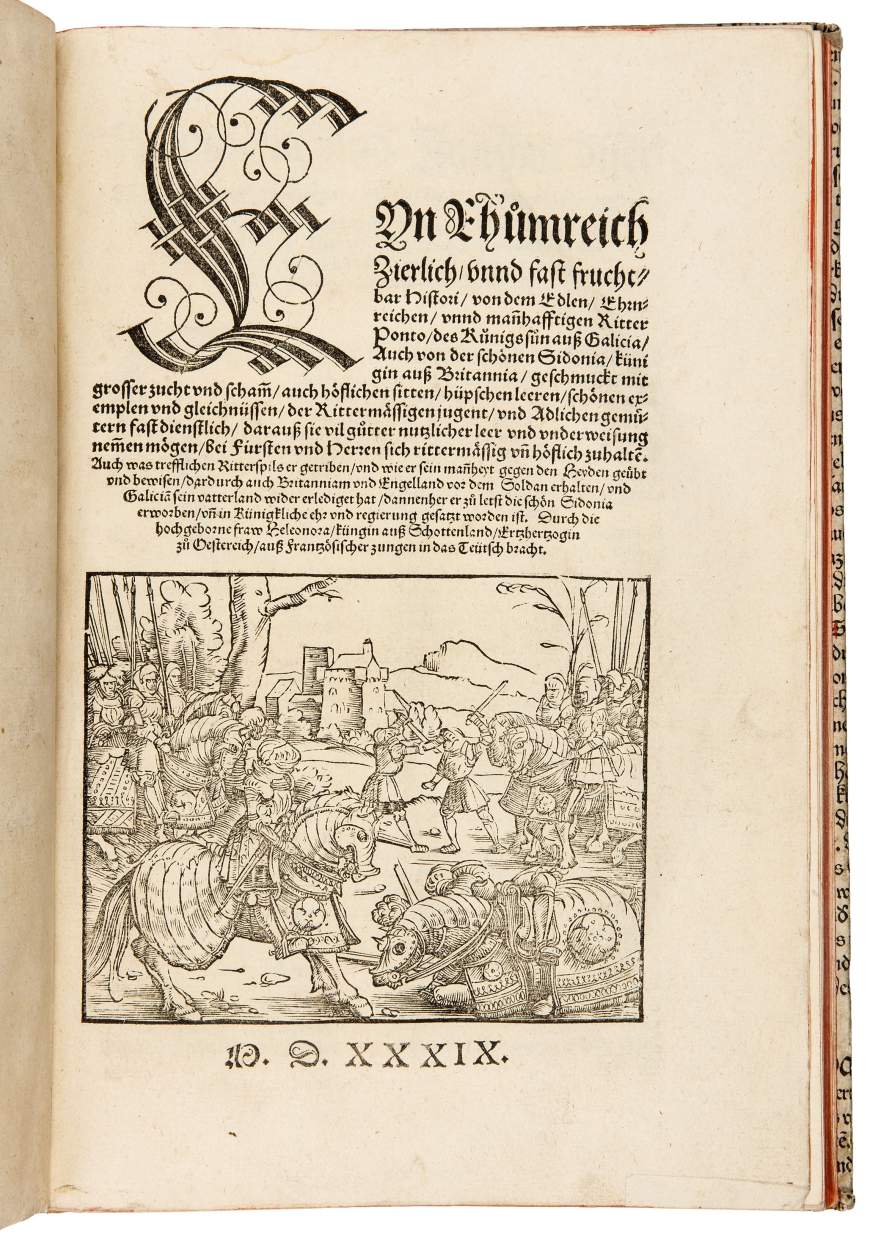Artworks


(Ponthus et Sidoine, in German) Eyn Rhumreich zierlich, unnd fast fruchtbar Histori, von dem Edlen, Ehrnreichen, unnd mannhafftigen Ritter Ponto
Translated by Eleanor of Austria
Strasbourg: Sigmund Bund, 1 March 1539
Sixth German edition, the second in Strasbourg
292 x 197 mm


(Ponthus et Sidoine, in German) Eyn Rhumreich zierlich, unnd fast fruchtbar Histori, von dem Edlen, Ehrnreichen, unnd mannhafftigen Ritter Ponto
Translated by Eleanor of Austria
Strasbourg: Sigmund Bund, 1 March 1539
Sixth German edition, the second in Strasbourg
292 x 197 mm


(Ponthus et Sidoine, in German) Eyn Rhumreich zierlich, unnd fast fruchtbar Histori, von dem Edlen, Ehrnreichen, unnd mannhafftigen Ritter Ponto
Translated by Eleanor of Austria
Strasbourg: Sigmund Bund, 1 March 1539
Sixth German edition, the second in Strasbourg
292 x 197 mm

Pontus and Sidonia is one of the central works of German medieval romance which was put into print, due to its wide spread acclaim in German speaking society. The text was originally composed in French c. 1400, known as ‘Ponthus et la belle Sidonie’, possibly by Geoffroy IV de la Tour Landry, or another member of the famous La Tour family. The text is closely linked to the Lords of La Tour, who traced their ancestral possessions in Brittany back to the entourage of Prince Pontus.
When Pontus' town, Cologne, is conquered by the Sultan's son Produs, Pontus and his thirteen companions are saved by a clandestine Christian in Produs' service. Escaping to Brittany, Pontus falls in love with the king's daughter, Sidonia, but must endure several trials and tribulations in order to win her hand. After fighting the Sultan's troops and returning to his native country with Sidonia, Pontus frees the land from heathen occupation.
The book is richly illustrated with intricate woodcuts. Nineteen of the thirty-two woodcuts employ his workshop’s characteristic style with fine and narrow hatching to classify tone and body. Another particularity of Grüninger’s workshop is the use of two woodblocks to create a more complex image. For example, the encounter of Pontus and Sidonia (fol. D3) takes place in a typical Grüninger setting with distinctive, elaborate Upper Rhenish patrician houses, in extensive landscapes that are characterised by smooth hills and trees with fleshy leaves. Both protagonists are clad in 15th-century costumes. The clever and effective method of creating combinable woodcuts that could be arranged in innumerable new compositions was soon adopted by other printers and publishers.
This extremely popular chivalric romance was translated from French into German by Duchess Eleanor of Austria (1433–1480), daughter of King James I of Scotland and Jeanne Beaufort. In 1449, Eleanor married Duke Sigmund of Tyrol, and around 1468 she started to translate this romance, which remained her most important literary work. The text was first printed after her death in 1483, with three other editions until 1500, and no less than eleven editions in the 16th century confirming the wide and unborken popularity of this courtly romance.
See this item in our catalogue, Heroes and Heroines.



